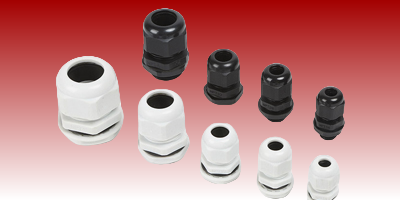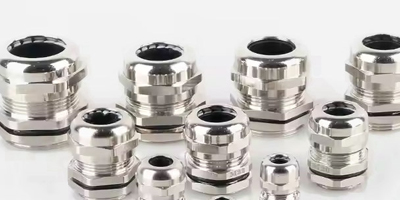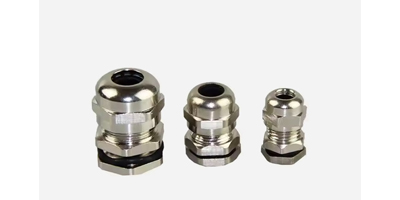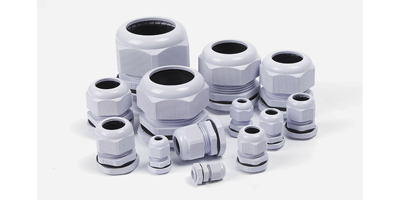Cable glands play a crucial role in electrical and electronic systems. They are devices that are used to terminate cables, providing a secure connection, protection against environmental factors, and in some cases, shielding against electromagnetic interference. This article will explore the inner workings of cable glands, different types, the significance of glands and accessories, as well as the function of cable gland plugs.
Cable Gland Types
1.Mechanical Glands
These are the most basic type of cable glands. They work by mechanically clamping the cable. For example, compression glands use a nut and a body. When the nut is tightened, it squeezes a rubber or plastic sealing element around the cable. This not only secures the cable in place but also provides a seal against dust and moisture. In industrial settings, such as factories where there is a need to protect cables from the ingress of particulate matter, mechanical glands are commonly used.
2.Flame - proof Glands
Designed for use in hazardous areas, like oil refineries or chemical plants where there is a risk of explosion. Flame - proof glands are constructed in a way that if an internal explosion occurs within the cable system, the gland will prevent the flames and hot gases from escaping to the surrounding environment. They are made of materials such as brass or stainless steel, which can withstand high temperatures and pressures. The design often includes a threaded connection that is carefully engineered to maintain a tight seal even under extreme conditions.
3.EMC Glands
With the increasing prevalence of electronic devices and the need to avoid electromagnetic interference, EMC (Electromagnetic Compatibility) glands have become essential. These glands are made of conductive materials, such as stainless steel. They work by creating a continuous conductive path from the cable's shielding to the equipment's enclosure. This allows any electromagnetic interference to be safely diverted to the ground, ensuring that the signals within the cable are not disrupted. In data centers or communication systems, where signal integrity is of utmost importance, EMC glands are widely used.
Cable Gland and Accessories
1.aling Elements
Sealing elements are a vital part of cable glands. They are usually made of rubber or silicone materials. These elements are designed to fit snugly around the cable, creating a watertight and airtight seal. For example, in outdoor applications, such as street lighting systems, the sealing element in the cable gland prevents water from entering the cable, which could cause short - circuits. Different types of sealing elements are available depending on the environmental conditions. For instance, there are heat - resistant sealing elements for use in high - temperature environments, and chemical - resistant ones for areas where the cable may be exposed to corrosive substances.
2.Locking Nuts and Washers
Locking nuts are used to secure the cable gland in place. They are tightened onto the gland body, ensuring that the gland remains firmly attached to the equipment or enclosure. Washers, on the other hand, are placed between the nut and the gland body. They help distribute the pressure evenly when the nut is tightened, preventing damage to the gland. In addition, washers can also act as a secondary sealing mechanism in some cases. For example, in vibration - prone applications, like in industrial machinery, the locking nuts and washers help keep the cable gland in position, maintaining the integrity of the connection.
3.Cable Clamps
Cable clamps are accessories that are used to provide additional support to the cable within the gland. They are especially useful for heavier cables or in applications where there is a risk of the cable being pulled or jerked. Cable clamps can be made of metal or plastic. In a large - scale power distribution system, where thick and heavy cables are used, cable clamps within the cable glands help prevent the cables from sagging or moving, which could lead to damage over time.
Cable Gland Plugs
1.Function
Cable gland plugs are used when a cable gland is not being used to terminate a cable. They are inserted into the gland to maintain the integrity of the gland's seal. For example, in a control panel where there are multiple cable gland openings, but not all of them are currently in use, cable gland plugs are inserted into the unused openings. This prevents dust, moisture, and other contaminants from entering the panel through the gland openings.
2.Types
There are two main types of cable gland plugs: solid plugs and blanking plates. Solid plugs are typically made of the same material as the gland's sealing element, such as rubber. They are designed to fit tightly into the gland opening, creating a complete seal. Blanking plates, on the other hand, are usually made of metal. They are used in more industrial - grade applications where a more robust seal is required. Blanking plates are attached to the gland using screws or bolts, providing a secure and long - lasting seal.
In conclusion, cable glands are complex yet essential components in electrical and electronic systems. Their proper functioning, along with the correct selection of types, accessories, and the use of cable gland plugs, is crucial for ensuring the safety, reliability, and performance of the overall system. Whether it's in a small - scale domestic application or a large - scale industrial setup, understanding how cable glands work is fundamental for effective installation and maintenance.
In conclusion, cable glands are vital in electrical and electronic systems. Basic mechanical glands secure cables by clamping, while flame - proof and EMC glands suit specific, challenging environments, each with unique functions.
Cable Gland Accessories are of great importance. Sealing elements block moisture and contaminants, locking nuts and washers ensure secure connections, and cable clamps support cables. These accessories work in tandem with cable glands, enhancing functionality and durability. Whether for domestic or industrial use, proper selection and use of Cable Gland Accessories are crucial for long - term, reliable cable system operation. Without them, cable gland effectiveness in protecting and maintaining connections would be greatly reduced.



















